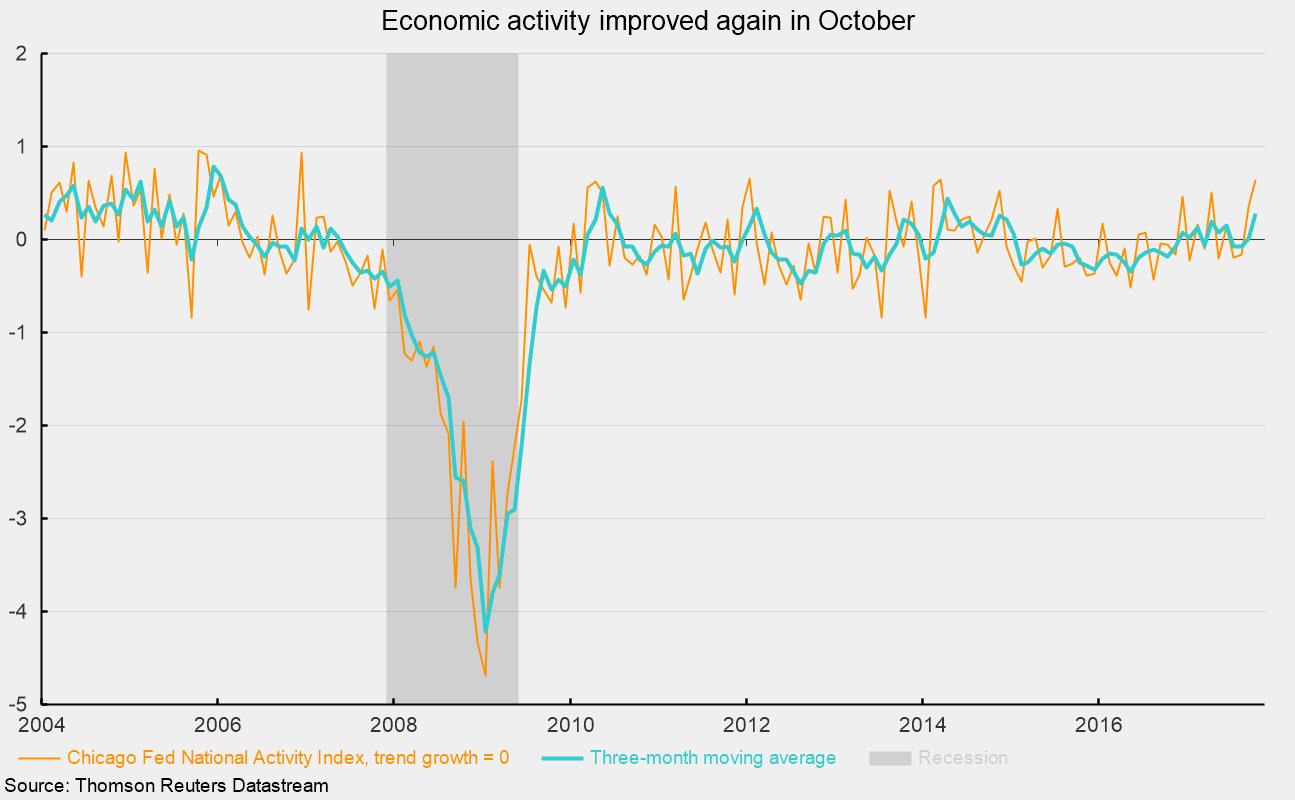The Chicago Fed National Activity Index Rose Again in October
The Chicago Fed’s National Activity Index rose again in October, increasing to 0.65, the highest level since January 2012. The index is a composite index of 85 economic data series. It is constructed so zero represents trend growth in the economy, with readings above zero suggesting above-trend growth and readings below zero indicating below-trend growth.
The index rose by 0.29 points in the latest month, up from a reading of 0.36 in September, and was the third monthly increase in a row. The three-month run of gains was the first such run since September through November 2014.
The three-month average, which helps reduce month-to-month volatility in the index, came in at 0.28, the highest since May 2014 and up from 0.01 in the prior month. October was also the third month in a row of gains for the three-month average.
The overall index comprises four component indexes: production and income; employment, unemployment and hours; personal consumption and housing; and sales, orders and inventories. For October, three of the four components posted positive readings, with personal consumption and housing being the one negative contributor. The same three components contributed positively in September as well. September and October were the first back-to-back months since October–November 2014 where at least three of the four components made positive contributions.
The stronger performance of the index in October suggests growth in real gross domestic product likely got off to a solid start in the fourth quarter. Real GDP rose at a 3.0 percent pace in the third quarter, after rising at a 3.1 percent pace in the second quarter. If real GDP manages to grow at a 3 percent pace or higher in the final quarter, it will be the first time since 2004 that the United States has had three consecutive quarters of growth at or above 3 percent.
Some of the gains in current measures of economic activity may be a snapback from the disruptions attributable to natural disasters such as hurricanes and wildfires in the second quarter. Regardless, the labor market remains robust, incomes are rising and confidence is relatively high, suggesting the outlook remains reasonably upbeat, with the likelihood of recession over the next several months quite low. The favorable outlook however does not reduce the need to remain vigilant for signs of unsustainable growth, particularly in money and debt, and to avoid assumptions about future economic conditions that are overly optimistic and might result in underestimating risk.



